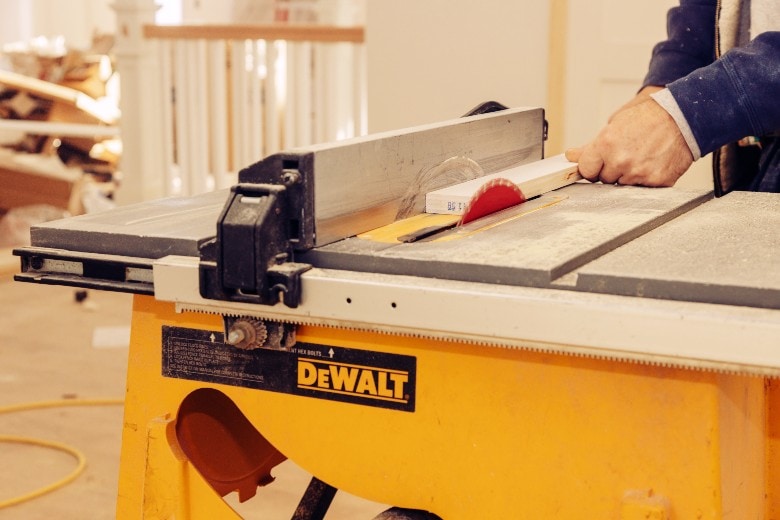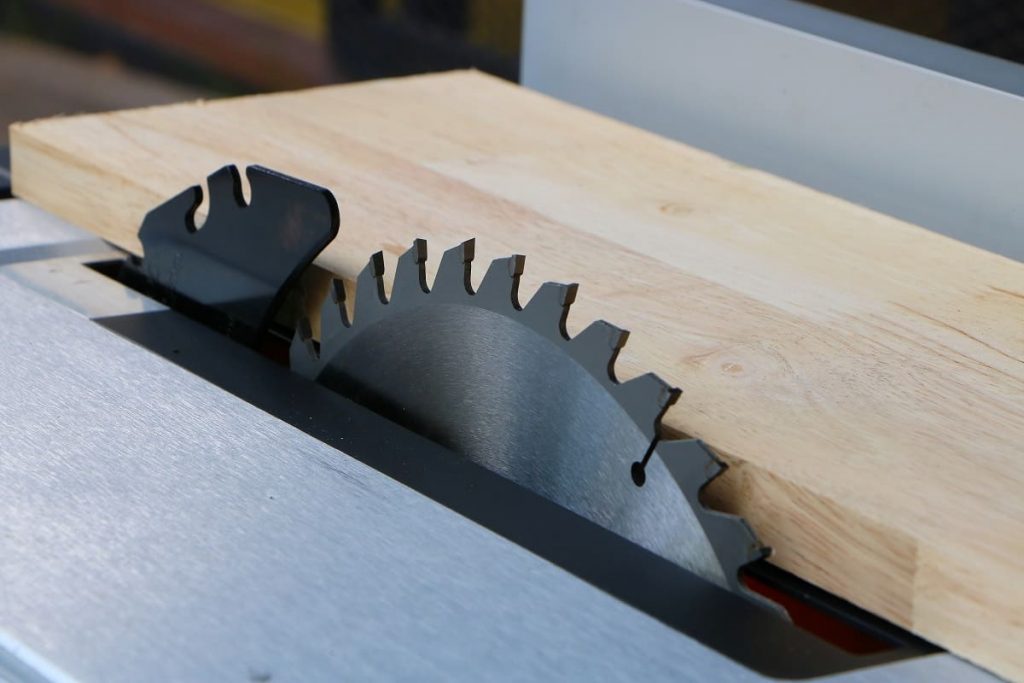If you’re wondering how much table saw you need, you’ve come to the right place. Picture this: you’re itching to take on some woodworking projects, and you’re in the market for a table saw. But with so many options out there, how do you determine the right one for you? Well, buckle up because we’re about to explore the world of table saws!
When it comes to choosing a table saw, it’s essential to consider your needs and the type of projects you’ll be tackling. Whether you’re a beginner or an experienced woodworker, finding the right table saw can make all the difference in the quality of your work. But fear not, my young woodworking enthusiast! We’re here to guide you through the process and help you find the perfect table saw that fits like a glove.
So, get ready to dive into the world of table saws as we discuss the factors to consider, the different types available, and how they can meet your woodworking needs. By the end of this article, you’ll be equipped with the knowledge and confidence to choose the right table saw for your projects. Let’s get sawing!

How Much Table Saw Do I Need?
When it comes to woodworking, a table saw is one of the most versatile and essential tools you can have in your workshop. But with so many options available, it can be overwhelming to determine how much table saw you actually need. Whether you’re a professional woodworker or an enthusiastic hobbyist, this article will guide you through the key factors to consider when choosing a table saw that suits your needs, budget, and skill level.
Different Types of Table Saws
Before diving into the specifics, let’s explore the different types of table saws available in the market. Understanding the pros and cons of each type will help you make an informed decision:
1. Portable Table Saws
Portable table saws are lightweight and designed for ease of transportation. They are perfect for contractors or woodworkers who need to move the saw frequently between job sites. These saws typically have a smaller table size, but that doesn’t compromise their cutting power. Portable table saws are ideal for less demanding woodworking projects and hobbyists who have limited space.
On the downside, portable table saws may lack some of the advanced features found in larger stationary models. However, they are more budget-friendly and offer excellent value for the price.
2. Contractor Table Saws
Contractor table saws are a step up in terms of power and functionality compared to portable saws. They are heavier and more stable, making them suitable for use in a dedicated workshop or garage. Contractor table saws often feature a larger table size, providing more workspace and stability when cutting larger materials.
These saws typically have a powerful motor that can handle thicker and denser materials. They come with advanced features such as rip fences and miter gauges for precise cutting. Contractor table saws are a popular choice among serious hobbyists and professionals who need a reliable and versatile tool.
3. Cabinet Table Saws
If you’re a professional woodworker or someone who works with heavy-duty materials regularly, a cabinet table saw is the top-of-the-line option. These saws are built to withstand heavy use and can tackle the most demanding cutting tasks. Cabinet table saws are known for their durability, precision, and power.
Featuring a solid and robust construction, cabinet table saws offer excellent stability and reduced vibration, resulting in smoother and more accurate cuts. They often come equipped with advanced safety features such as riving knives and blade guards. Cabinet table saws are the go-to choice for professionals who value performance and reliability.
Budget Considerations
Now that you’re familiar with the types of table saws available, let’s discuss one of the crucial factors to consider: your budget. Table saws can vary significantly in price, depending on their type and features. It’s essential to strike a balance between your woodworking needs and your budget.
Portable table saws tend to be the most affordable option, making them suitable for beginners or those with budget constraints. Contractor table saws are a mid-range option, offering a good balance of price and functionality. If you have a larger budget and require professional-grade tools, investing in a high-quality cabinet table saw is the way to go.
Remember, regardless of your budget, always prioritize essential features such as a sturdy build, accurate cutting mechanisms, and safety features. It’s better to invest in a reliable table saw that meets your needs than to compromise on quality for a lower price.
Features to Consider
Now that we’ve covered the basics, let’s delve into the key features to consider when selecting a table saw:
1. Motor Power
The motor power of a table saw determines its cutting capacity. The higher the horsepower (HP), the more robust and versatile the saw will be. However, keep in mind that higher HP generally translates to a more expensive saw. Consider the type of projects you’ll be working on to determine the appropriate motor power for your needs.
2. Table Size and Extension Wings
The size of the table and its extension wings determine the available workspace for cutting large materials. A larger table allows for more stability and support, particularly when working with large sheets of plywood or other oversized materials. Extension wings provide additional support for longer and wider pieces.
3. Blade Adjustments and Controls
Look for a table saw with easy-to-use blade height and angle adjustments. These controls should be precise, allowing you to make accurate cuts quickly. Some models even come with digital displays for precise measurements.
4. Safety Features
Safety should always be a top priority when working with power tools, and table saws are no exception. Look for features such as blade guards, riving knives, and anti-kickback pawls to ensure your safety during operation. Some models also have flesh-sensing technology to prevent severe injuries.
5. Dust Collection
Woodworking can create a significant amount of sawdust and debris. A table saw with an efficient dust collection system will help keep your workspace clean and improve safety. Look for models with built-in dust ports or the option to connect to external dust collection systems.
6. Fence and Miter Gauge
A high-quality and accurate fence is crucial for making straight cuts effortlessly. Look for a table saw with a sturdy and reliable fence system that locks securely and allows for precise adjustments.
A miter gauge is essential for making crosscuts and angled cuts. Ensure that the miter gauge is easy to adjust and offers precise angles for accurate cuts.
Conclusion
Choosing the right table saw for your woodworking needs is a decision that should not be taken lightly. Consider the type of projects you’ll be working on, your budget, and the essential features that will enhance your woodworking experience. Whether you opt for a portable, contractor, or cabinet table saw, prioritize quality, performance, and safety. With the right table saw, you’ll be well-equipped to tackle any woodworking project with confidence and precision.
Key Takeaways: How Much Table Saw Do I Need?
- A table saw is a versatile tool used for cutting wood and other materials.
- The size of the table saw you need depends on the type of projects you will be working on.
- If you are a casual DIYer, a compact table saw with a smaller blade size will suffice.
- For professional carpenters and woodworkers, a larger table saw with a powerful motor and a larger cutting capacity is necessary.
- Consider the available space in your workshop before purchasing a table saw to ensure it will fit comfortably.
Frequently Asked Questions
If you’re wondering how to determine the right size table saw for your needs, we’ve got you covered. Here are some common questions and answers to help you figure out how much table saw you need:
1. What factors should I consider when choosing the size of a table saw?
When choosing a table saw size, there are a few key factors to consider. First, think about the type of projects you’ll be working on. If you plan on cutting large materials or making wide crosscuts, a larger table saw with a larger rip capacity would be beneficial. Second, consider your available workspace. If you have limited space, a smaller table saw may be more practical. Finally, think about your budget. Larger table saws with more features tend to be more expensive, so make sure you choose a size that fits within your budget.
2. How can I determine the right rip capacity for my table saw?
Rip capacity refers to the width of material that can be cut on a table saw. To determine the right rip capacity for your needs, consider the size of the materials you’ll typically work with. If you usually work with smaller pieces, a table saw with a rip capacity of 24 inches or less will suffice. However, if you frequently work with larger materials, such as sheet goods or wide boards, look for a table saw with a rip capacity of 36 inches or more. Keep in mind that having extra rip capacity can be beneficial for future projects.
3. Should I choose a portable or stationary table saw?
The choice between a portable and stationary table saw depends on your specific needs and preferences. Portable table saws are lighter and more compact, making them ideal for jobsites or if you need to transport it frequently. They are also generally more affordable. On the other hand, stationary table saws are heavier and sturdier, providing greater stability and precision. They are typically more powerful and have larger cutting capacities. If you have a dedicated workshop and work on bigger projects, a stationary table saw would be a better choice.
4. Can I use a smaller table saw for larger projects?
While it is possible to use a smaller table saw for larger projects, there are limitations to consider. A smaller table saw may have a limited rip capacity, making it difficult to cut larger materials. This can lead to inaccurate cuts and potential safety issues. Additionally, smaller table saws might have less power, which can result in slower cutting speeds or difficulty handling tougher materials. If you anticipate working on larger projects frequently, investing in a larger table saw with the appropriate capacity and power is recommended to ensure efficiency and accuracy.
5. How do I find the right balance between price and quality when choosing a table saw size?
When it comes to finding the right balance between price and quality for a table saw, it’s essential to consider your specific needs and budget. Determine the features and capabilities that are most important to you, and do some research to compare different models. Look for table saws from reputable brands known for their quality and durability. While it’s tempting to opt for the cheapest option, remember that investing in a higher-quality table saw will likely result in better performance, accuracy, and longevity. Consider the table saw as a long-term investment in your woodworking or DIY projects, and choose a size that meets your needs without compromising on essential features.

Table Saw Buyer’s Guide
Summary
So, let’s sum it all up! When deciding how much table saw you need, consider your budget, the size of your projects, and your level of experience. If you’re just starting out and working on small DIY projects, a compact and affordable table saw should do the trick. But if you’re a professional or tackling larger projects, investing in a more powerful and feature-rich table saw is a good idea. Remember to prioritize safety by choosing a saw with safety features like blade guards and anti-kickback mechanisms. Lastly, always wear safety gear, follow instructions, and consult professionals if needed. Happy sawing!
